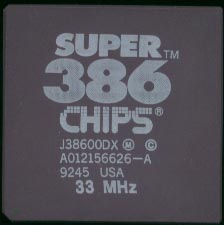Intel vs. The World – The Infamous ‘338 Patent
A Brief History
Long before the mess of Apple vs. Samsung (and seemingly everyone else), there was another famous company, with a patent in hand, that it seemed everyone was violating. The issue of Intellectual Property (IP), and its associated patents has long been an issue in the technology business, and certainly in the business of CPU’s. There are many many functions inside a CPU, different structures for handling instructions, memory access, cache algorithms, branch prediction etc. All of these are unique, intellectual property. It doesn’t matter if you implement them with a slightly different transistor structure, as long as the end product is relatively the same, there is the risk of violating a patent. Patents are tricky things, and litigating them can be very risky. You must balance the desire to keep competition from violating your IP, but at the same time minimize the risk that your patent is declared invalid. This is why most cases end up in an out of court settlement, usually via arbitration. Actual patent jury trials are fairly rare, as they are very expensive and very risky to all parties involved
In the early days (1970’s and early 1980’s) there was routine and widespread cross licensing in the industry. Many companies didn’t have the fab capacity to reliably meet demand (IBM wouldn’t purchase a device unless it was made by at least 2 companies for this very reason) so they would contract with other manufacturers to make their design. Having other companies manufacture your design, or compatible parts, also increased the market share of your architecture (8086, 68k etc). For years AMD made and licensed most everything Intel made, AMD also licensed various peripheral chips to Intel (notably the 9511/2 FPU). As the market grew larger, the competition increased, Intel (and others) began to have enough reliable fab capacity to safely single source devices. Meanwhile other companies continued to make compatible products, based on previous licensing. AMD notably made x86 CPU’s that ate into Intel’s market share. In the 1970’s Intel had cross license agreements with AMD, IBM, National, Texas Instruments, Mostek, Siemens, NEC and many others.


